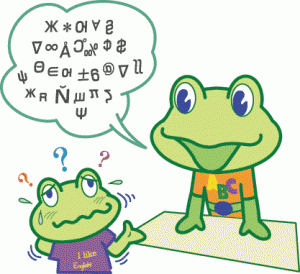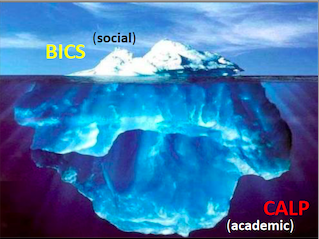Not all Languages are Alike (language comparisons)
You don’t need to know your students’ first language to teach them English but it helps a lot if you know a little about their first language. Graduate students at Rhode Island College put together these short PowerPoints (12 slides) on many world languages:
- Background information about the language; its varieties, where it is spoken, its orthography (spelling) and structure;
- Information about common problems a speaker of that language would have when learning English; natural errors they might make; and
- Cross-cultural communication style; aspects to be aware of (greeting, touching and other taboos) when conversing with a speaker of that language.
Factors that Affect Second Language Acquisition (chart)
- Quality of Instruction

- Native Language Literacy
- Motivation/Attitude Toward Language
- Home Support
- Life Experience
- Personality
- Similarities Between L1 and L2
- Peer Pressure
http://be-research-spr-2012.wikispaces.com/file/view/Comprehensible_input/311574234/407×273/Comprehensible_input
BICS and CALP – Language Distinctions from Jim Cummins (site)
BICS (Basic Interpersonal Communication Skills) This refers to informal social language that takes 1 to 3 years to develop with sufficient exposure.
CALP (Cognitive Academic Language Proficiency) It’s a big jump from social language to academic language. Just because students speak unaccented and fluent English in the halls and on the playground doesn’t mean they have developed academic language skills to succeed in the classroom.
Research shows it may take seven to ten years for an ELL to develop academic language proficiency.
Stephen Krashen’s Monitor Model (video clip)
Second Language Acquisition (SLA) is based on 5 hypotheses:
- Acquisition-Learning: Acquisition is a sub-conscious process.
- Natural Order: Language is acquired in a predictable order by all learners.
- Monitor: We are able to use what we have learned (in Krashen’s sense) about the rules of a language in monitoring (or self-correcting) our language output.
- Comprehensible Input: We acquire language in one way only: when we are exposed to input (written or spoken language) that is comprehensible to us.
- Affective Filter: Comprehensible input will not result in language acquisition if that input is filtered out because of anxiety, poor self-esteem or low motivation.
Stages of Oral Language Acquisition (video clip)
- Silent Period
- Early Production
- Speech Emergence
- Intermediate Language Proficiency
- Advanced Fluency
Zone of Proximal Development – Vygotsky (video clip)
If we teach what our students already know, they get bored. If we teach something way beyond them, they get frustrated. This clip shows why it is crucial to know our students’ level of English proficiency. We must tailor our instruction to challenge them while still making it comprehensible.
Principles of Language Development from WIDA
Contact me
I welcome suggestions for other resources to be included in this site. Please use my contact form or email me directly at jessicaloose.obx@gmail.com.


